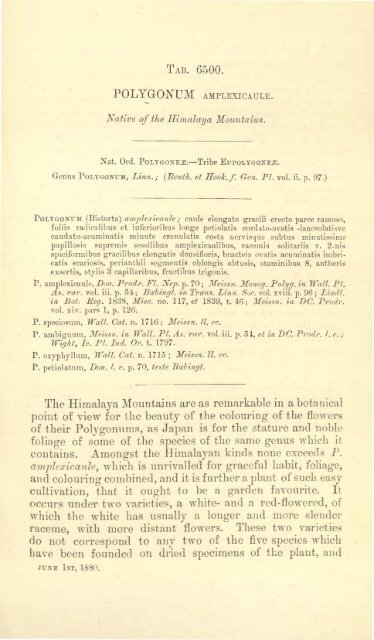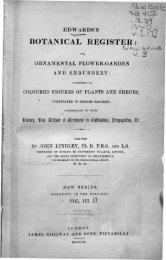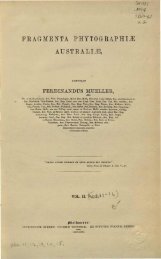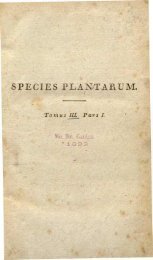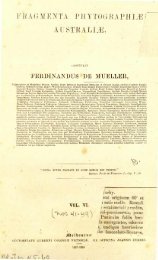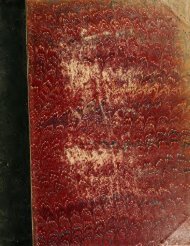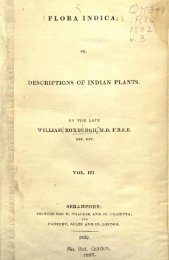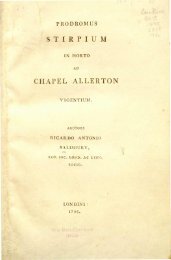Botanical Magazine 106 - 1880.pdf - hibiscus.org
Botanical Magazine 106 - 1880.pdf - hibiscus.org
Botanical Magazine 106 - 1880.pdf - hibiscus.org
Create successful ePaper yourself
Turn your PDF publications into a flip-book with our unique Google optimized e-Paper software.
TAB. 6500.<br />
POLYGON• AMPLEXICAULE.<br />
Native of the Himalaya Mountains.<br />
Nat. Ord. POLYGONEN.•Tribe EUPOLYGOXE^E.<br />
Genus POLYGONUM, Linn.; (Benth. et Hook.f. Gen. PI. vol. ii. p. 97.)<br />
POLTGONUM (Bistorta) amplexicaule ; caule elongato gracili erecto parce ramoso,<br />
foliis radicalibus et inferioribus longe petiolatis cordato-ovatis -lanceolatisve<br />
caudato-acuminatis minute crenulatis costa Derrisque subtus minutissinie<br />
papillosis supremis sessilibus amplexicaulibus, racemis solitariis v. 2-nis<br />
spiciformibus gracilibus elongatis densifloris, bracteis ovatis acuminatis imbri-<br />
catis scariosis, perianthii segmentis oblongis obtusis, staininibus 8, antberis<br />
exsertis, stj'lis 3 capillaribus, fructibus trigonis.<br />
P. amplexicaule, Don. Prodr. Fl. Nep. p. 70 ; Meissn. Monog. Polyg. in Wall. PI.<br />
As. rar. vol. iii. p. 54; Babingt. in Trans. Linn. Sue. vol. xviii. p. 96 ; Lindl.<br />
in Bot. Reg. 1838, Misc. no. 117, et 1839, t. 46; Meissn. in DC. Prodi:<br />
vol. xiv. pars 1, p. 126.<br />
P. speciosum, Wall. Cat. n. 1716 ; Meissn. II. cc.<br />
P. ambiguum, Meissn. in Wall. PI. As. rar. vol. iii. p. 51, et in DC. ProJr. I. c. ;<br />
Wight, Ic. PI. Ind. Or. t. L797.<br />
P. oxypbyllum, Wall. Cat. n. 1715 ; Meissn. II. cc.<br />
P. petiolatum, Don. I. c. p. 70, teste Babingt.<br />
The Himalaya Mountains are as remarkable in a botanical<br />
point of view for the beauty of the colouring of the flowers<br />
of their Polygonums, as Japan is for the stature and noble<br />
foliage of some of the species of the same genus which it<br />
contains. Amongst the Himalayan kinds none exceeds /'.<br />
amplexicaule, which is unrivalled for graceful habit, foliage,<br />
and colouring combined, and it is further a plant of such easy<br />
cultivation, that it ought to be a garden favourite. It<br />
occurs under two varieties, a white- and a red-flowered, of<br />
which the white has usually a longer and more slender<br />
raceme, with more distant flowers. These two varieties<br />
do not correspond to any two of the five species which<br />
have been founded on dried specimens of the plant, and<br />
JUNE 1ST, 1880.


